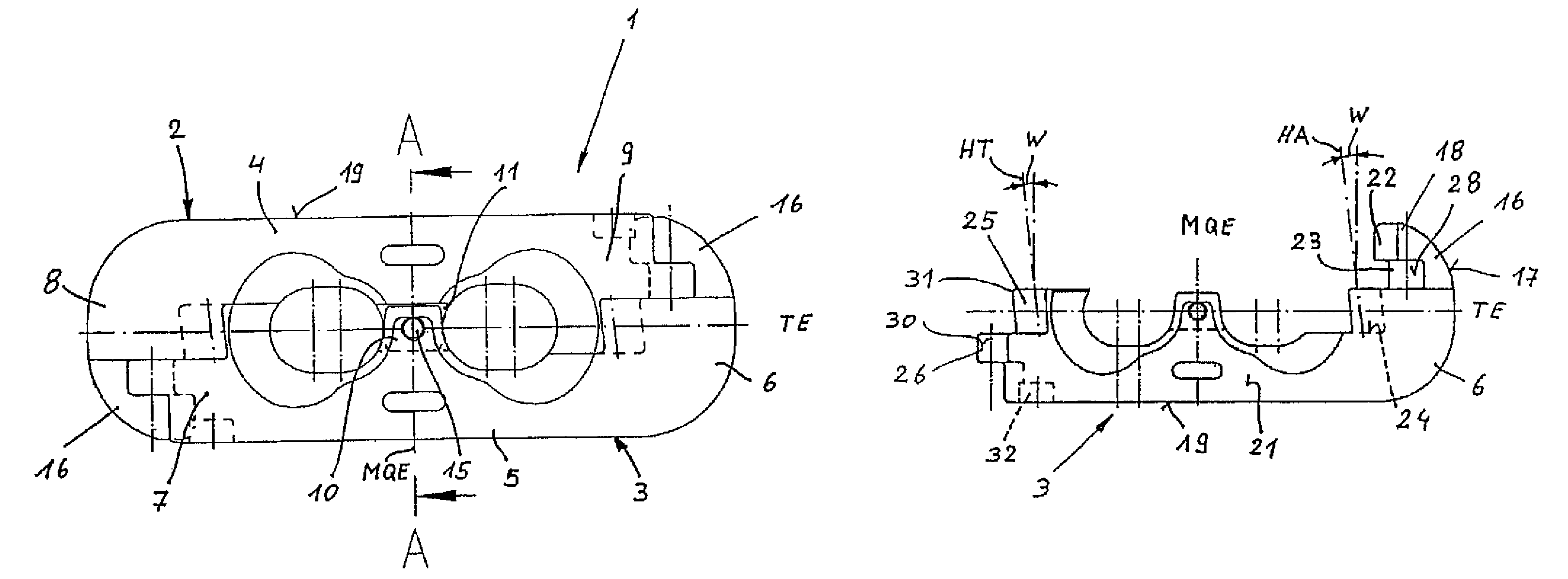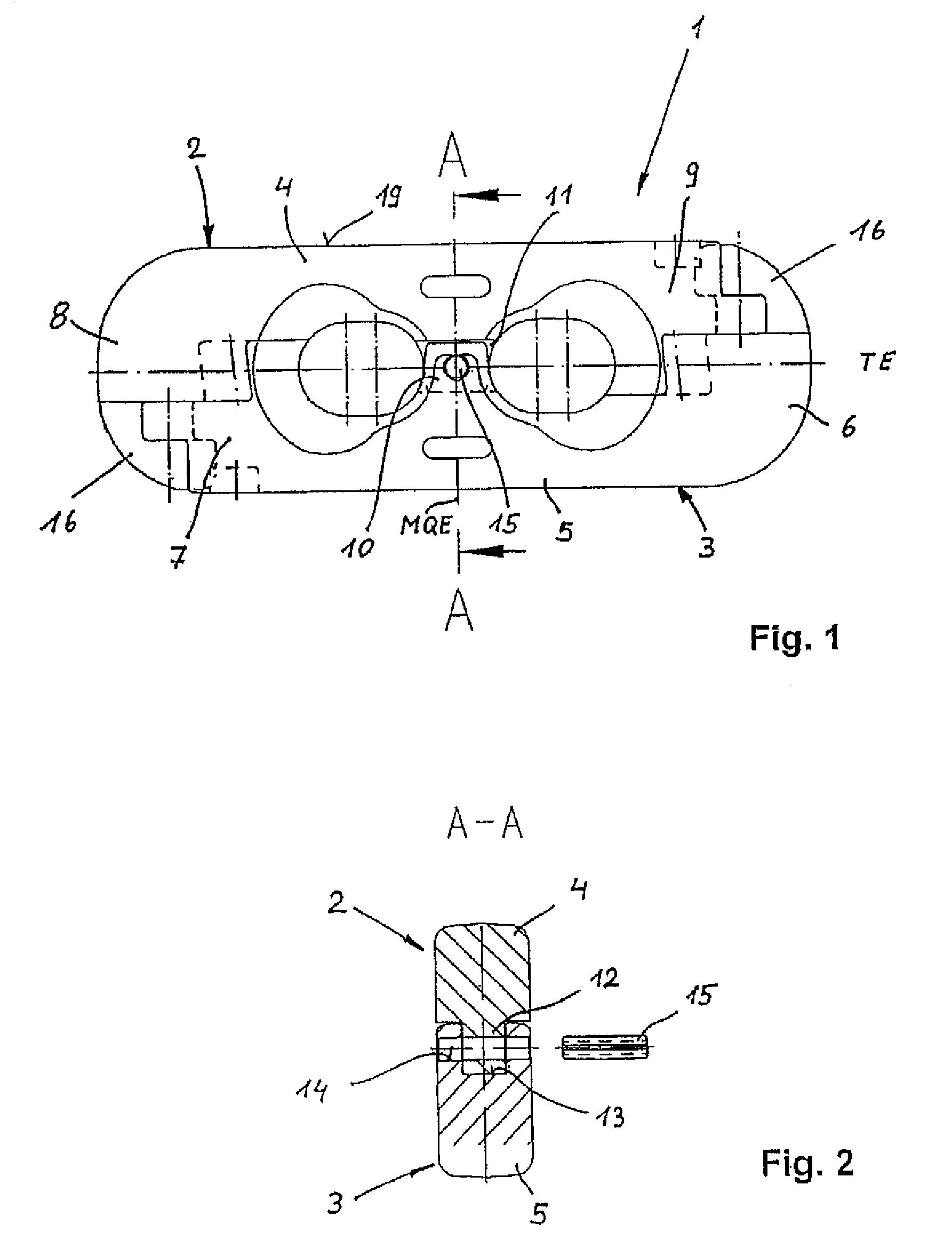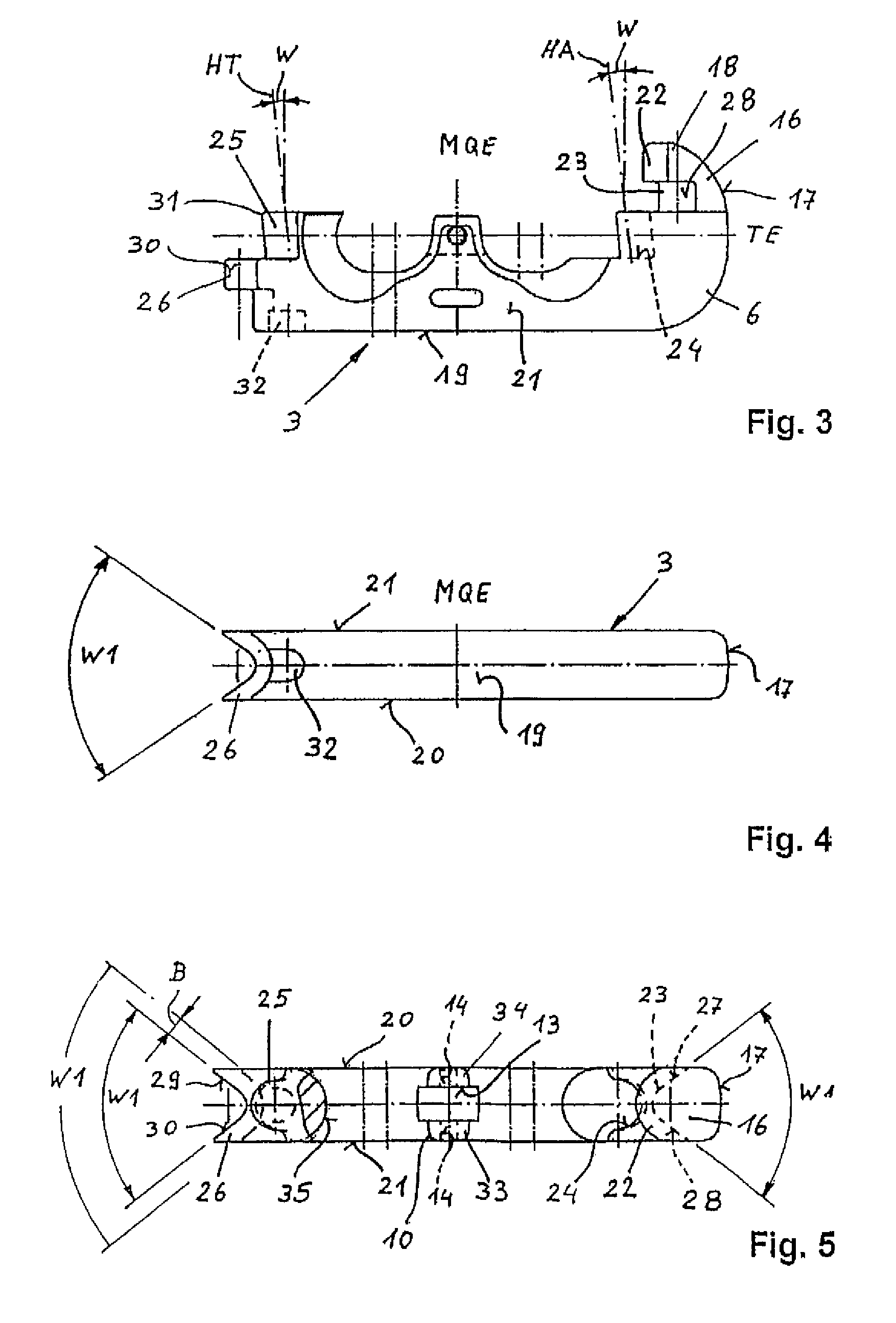Chain lock for round steel chains
a technology for chain locks and steel chains, applied in the direction of driving chains, chain fastenings, shackles, etc., can solve the problems of affecting the load-bearing capacity of the chain lock by the bottom of the tank, so as to improve the load-bearing capacity of the chain lock and the effect of minimal bending moments
- Summary
- Abstract
- Description
- Claims
- Application Information
AI Technical Summary
Benefits of technology
Problems solved by technology
Method used
Image
Examples
Embodiment Construction
[0022]FIG. 1 shows a chain lock 1 having two substantially L-shaped lock halves 2, 3. Each of the lock halves 2, 3 has rear sections 4, 5 that extend in the longitudinal direction, i.e., in the direction of their parting plane TE-TE, and terminate in coupling sections 6, 7, 8, 9.
[0023]The rear sections 4, 5 of the lock halves 2, 3 have center supports 10, 11, via which the rear sections 4, 5 are supported with respect to each other so that a central necking of the chain lock 1 under tensile loading is avoided. FIG. 2 shows a sectional view along line A-A, i.e., along the transverse middle plane MQE of the chain lock 1, with a tongue 12 of the upper lock half 2 in the drawing plane engaging a groove 13 of the center support 11 of the lower lock half. A cross bore 14 is arranged in the area of the groove 13 and the tongue 12 for receiving a locking pin 15 in the form of a tension pin.
[0024]Besides the configuration of the center support 10, 11, the configuration of the coupling sectio...
PUM
 Login to View More
Login to View More Abstract
Description
Claims
Application Information
 Login to View More
Login to View More - R&D
- Intellectual Property
- Life Sciences
- Materials
- Tech Scout
- Unparalleled Data Quality
- Higher Quality Content
- 60% Fewer Hallucinations
Browse by: Latest US Patents, China's latest patents, Technical Efficacy Thesaurus, Application Domain, Technology Topic, Popular Technical Reports.
© 2025 PatSnap. All rights reserved.Legal|Privacy policy|Modern Slavery Act Transparency Statement|Sitemap|About US| Contact US: help@patsnap.com



